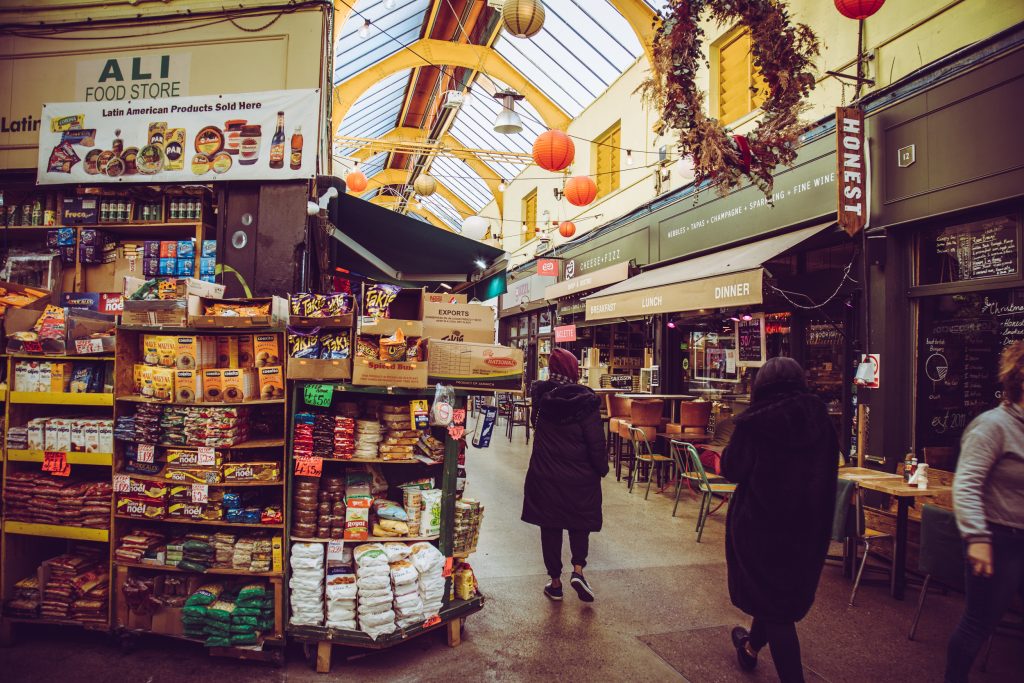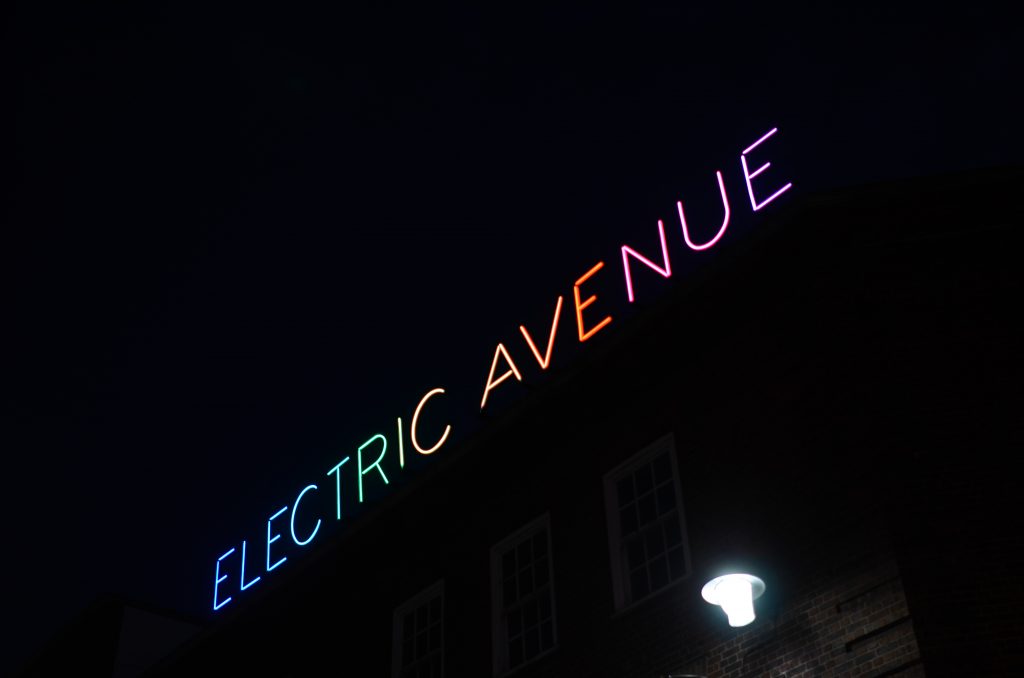Unity as a pillar of Brixton life
The identity of Brixton in popular imagination and cultural memory conjures many different images, for many different people. When I first went to university up in Leeds, I told one of my flatmates that I was from Brixton. Her first response was, ‘isn’t Brixton, like, a gangland?’. I denied that assessment. To me, it is so much more than a ‘gangland’ as historical and contemporary media coverage would otherwise suggest. However, it did, for the first time, force me to actually consider what Brixton meant to me, as a long term resident of the area.
“My heart will always be in Brixton.”
Olive Morris
I always saw Brixton as a centre of unity. My parents, who have lived in Brixton since they arrived in the 60s and 70s, would always regale stories about the 1981 and 1984 Uprisings as if they were moments of unified political and social activism to be commemorated, not condemned. When I was growing up, Brixton Market was more than just the heart of Brixton’s exchange economy. It was a space where I saw people foster relationships, create networks, exchange laughter and friendship across ethnic and cultural boundaries. I, and many others, feel a distinct sense of pride in Brixton’s history, and in my community that stood shoulder-to-shoulder in the face of persisting political and economic tribulations. I think community activist and Brixtonian, Olive Morris, captured it best: ‘My heart will always be in Brixton’.
Changing communities in Brixton
It’s no secret that this place has changed in recent years. Invisible forces of private investment and rising property prices have forced many out from the area, and invited many in their place. Social and demographic changes are difficult to quantify due to scarce information. But visually, there has been an obvious influx of young professionals over the last 20 years. They have fashioned new communities and created their own spaces in Brixton.
This isn’t inherently negative. Aside from the fact that an exodus of a traditional community has necessitated the entrance of this new community. The arrival of these new communities has not necessarily resulted in an integration into the existing ones. Instead it has created socially isolated communities living in close proximity to each other, but don’t create relationships between themselves. The unity that once characterised Brixton has been replaced by isolation and separation of new and old communities.
Multiple Brixtons
Brixton’s communities and cultures are complex and somewhat ambiguous. It is difficult to understand where divides actually exist between communities, or even to give clear-cut names to these communities. Popular narratives of social division in Brixton usually exist between newer ‘white, middle class’ communities, and working class people of colour who have long-established roots in Brixton. Obviously these categories aren’t hard and fast. Though they exist as the older community has tried to differentiate themselves from newer, often wealthier, residents. It is understandable that in the face of such rapid demographic changes in Brixton that similar individuals gravitate towards one another in order to carve out their own space in the area, and end up actualizing these two separate communities. However, it is a bit regressive to try and stuff the complexities of Brixton into this imaginary cultural, class, and ethnic binary.
My own history and life here is a testament to this. I grew up in a more affluent area in the south of Brixton. It has and continues to see a gradual influx of professional people not originally from Brixton who can afford the ever-increasing rent and property prices. Personally, I can identify with this widely ‘middle class’ community, but also with the historical community of traditionally working class individuals that have hailed from the Caribbean. I can benefit from a certain vantage point. I am able to weave between these communities, and consequently enter into the spaces that they separately occupy. From my own experience of straddling this superficial division, I think the issue remains that Brixton and Brixtonians have grown isolated and disconnected from one another.
Who is Brixton for now?
For a lot of young people, especially friends and those I grew up with, it feels like the ownership of Brixton has changed hands. It is no longer an area characterised by cultural and political activism. Now it’s a ‘trendy’ area that feels like it’s being developed for everyone aside from those who have established roots here. Property prices in Brixton have grown by 30% in the past few years. This is due to an influx of those from areas outside of Brixton that deem the area ‘cool’. Living here has become its own form of social currency; one that is predicated on the aestheticisation and commodification of long-standing culture in Brixton. Where those from outside of Brixton arrive to bask in its ‘coolness’. It also feels that they remain removed and ignorant of the politics of this ‘coolness.’
Consequently, older communities in Brixton feel something akin to defensiveness and possessiveness over a rapidly changing area. So abundant with histories of struggle and unity against establishment power, cultural creolisation within the market, and political organisation, long-standing residents feel like there is something so indescribably unique to the strength of Brixton’s unified community. But they feel it is being erased by demographic changes. Changes that have created socially isolated bubbles which co-exist, but fail to create meaningful relationships across these boundaries. These kinds of emotions inevitably lead into divisive politics whereby locals feel almost wronged by the newcomers in Brixton. This kind of gatekeeping is divisive, and the solutions to these issues of separation and cultural isolation are, again, complex. Brixton is not immune to national issues of austerity and privatisation, so socio-economic divides will persist nevertheless.
However, I think creating socially inclusive spaces that invite all members of Brixton, old and new, to interact and coalesce, is the first step necessary to extending relationships and networks across otherwise isolated social/cultural bubbles.

Redesigning Brixton’s spaces
Brixton Market and Brixton Village are perhaps the most obvious examples of where different communities live in close proximity to one another, but rarely cross into each other’s spaces. Butchers and greengrocers serving the majority of a certain demographic operate next to wine and cheese restaurants that serve the majority of another demographic that visit Brixton Village. It doesn’t outwardly seem that these populations have the confidence, money, or impetus to cross into each other’s spaces.
However, there are micro-spaces of interaction; spaces that allow people to converge and interact with impunity. Foucault (Of Other Spaces) labelled them ‘Heterotopia’s’ – discursive spaces out of the normal social order that facilitate relationships that would otherwise not be accepted or appropriate in the natural ‘utopia.’
I feel there are two specific micro-spaces that facilitate the interaction of newer and older residents of Brixton. One, coincidentally, exists on Brixton Station Road. The other is on Effra Road.
- The gym at Brixton Recreation Centre: The gym has become more than a space to exercise. Similarities and interests in exercise and fitness defy the differences of race/class/gender/cultural divides. Divisions lose their authority in this space. People create relationships in the gym that are based on advice, friendship, laughter.
- The Hootananny Pub: It used to be the ‘Hobgoblin’ when I was younger, and the George Canning prior to that. Personally, I think the Hootananny is the most important microspace of interaction in Brixton. It remains the ‘local’ for patrons that still call it the ‘George Canning,’. And as a space for young people, both local and from further afield, to enjoy the music, participate in open DJ sets, and watch comedy. At 2am on a Saturday night, the Hootananny is the perfect example of how Brixton’s communities can coalesce and connect across generational, cultural, and racial boundaries.
Making spaces to be enjoyed by all
The commonality between these spaces is that, generally, they’re affordable and inclusive environments. They invite both older and newer communities into one space. Here casual mixing and interaction gives way to discussion, relationship building, friendship, and ultimately connections across otherwise isolated communities. In an ideal world, these spaces wouldn’t be exceptions to a norm, but would constitute the norm. In short, more micro-spaces like these, need to exist in Brixton. Nonetheless, it’s the task of Lambeth Council, developers, and private investors to ensure that as Brixton’s spaces are redesigned and redeveloped they can be used and enjoyed by all.
What can developers do to redesign spaces that are inclusive? How can they create spaces that open the gates for interaction between and across communities? This will take considerate and mindful planning, community engagement and careful impact measurement. Whatever the future holds, hopefully as Brixton spatialities, changes and develops it will facilitate the nurturing of human interaction, not the stifling of it.
Read more about the AKOU’s project in Brixton. Explore how we’re helping to understand the social impact of the revitalisation of the Brixton Rec and Brixton Station Road .




